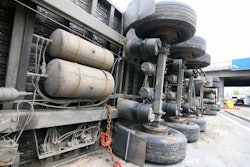Maintenance stands supreme when it comes to compliance and low scores with the Federal Motor Carrier Safety Administration’s Carrier Safety Compliance, Safety, Accountability program, says the agency’s current administrator, Anne Ferro.
Since CSA began in 2010, Ferro says the trucking industry has seen the most dramatic reduction in roadside violations in more than a decade, with vehicles violations per roadside inspection down by nearly 14 percent and driver-specific violations per roadside inspection down 17 percent.
“When you think about putting CSA in the context of safety, maintenance is at the foundation of that effort,” Ferro notes. “FCMSA’s number one goal is safety: We want to ensure that every trip is a safe trip every time. And we think CSA is bridging multiple worlds in that process. And the nation’s fleet maintenance professionals deserve a lot of credit for that; making older equipment work safely while learning to understand and use new technology in pursuit of low CSA scores and consistent safe vehicle operation.”
Ferro was part of a panel presented at the Technology and Maintenance Council’s annual fall meeting in Pittsburgh this week. The panel discussion, titled “CSA and its impact on maintenance,” was chaired by Mike Jeffress, vice president of maintenance for Maverick Transport.
Other panelists were Eric Benge, senior regional maintenance manager for Wal-Mart Transportation; Tim Staroba, director of maintenance for Con-way Freight; Ed Boles, director of maintenance for D&D Sexton; and Corporal Richard Koontz with the Pennsylvania State Police.
Panelists all agreed that integration of CSA regulations has required cultural shifts inside their organizations. The result, Jeffress noted, has been a consistent weeding out of poor performers in all areas, from drivers to technicians to fleets down to the law enforcement officers carrying out vehicle inspections.
“Before CSA, we were using behavior-based safety programs,” said Staroba. “It was a very punitive system when things went wrong. But then we realized that our people weren’t the problem. It was our processes. So, in order to comply with CSA, we changed them. Now, we seek to involve the guys who actually do the work or drive the trucks. We’ve got them involved in writing processes because they do the work. So now, the rules for everything we do are written by the people who do the job. It was a major cultural shift for our company.”










